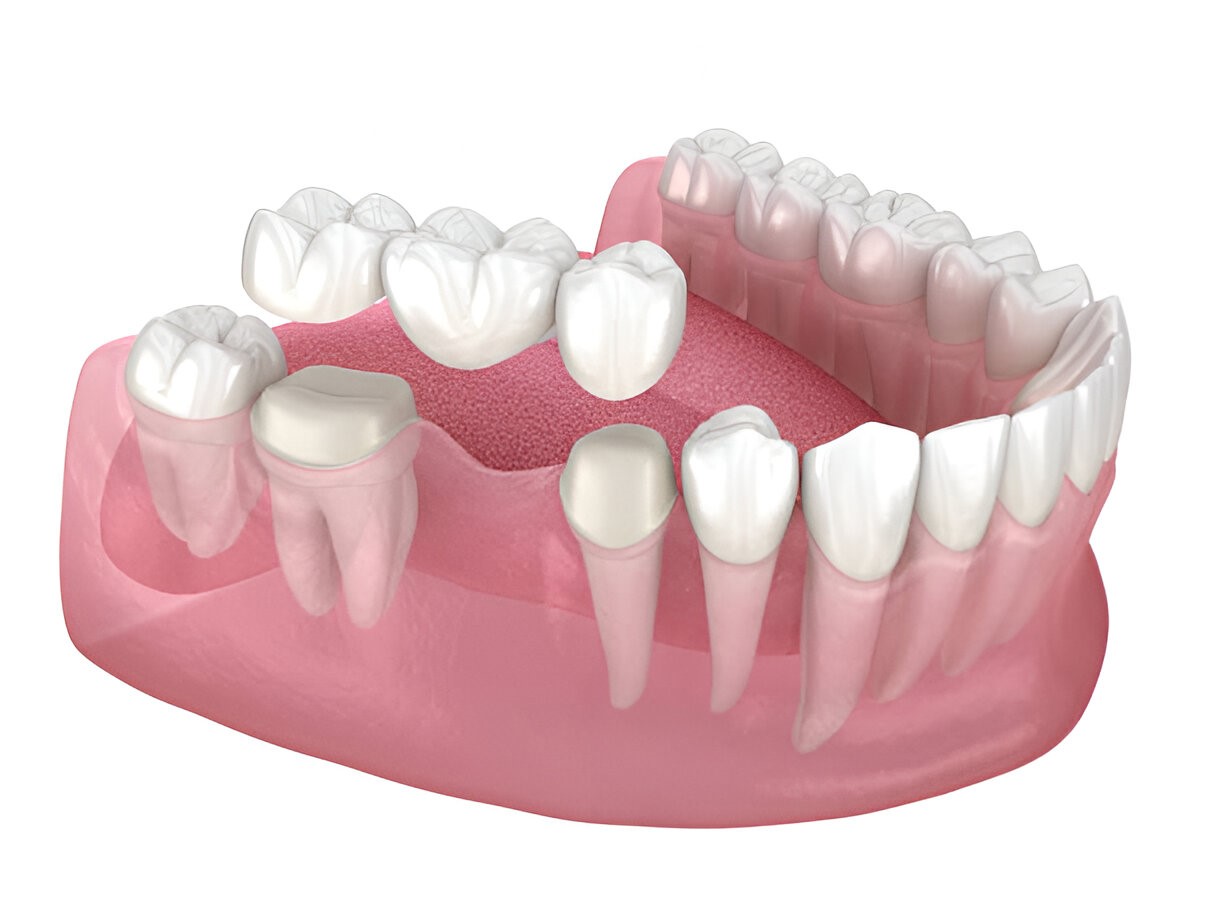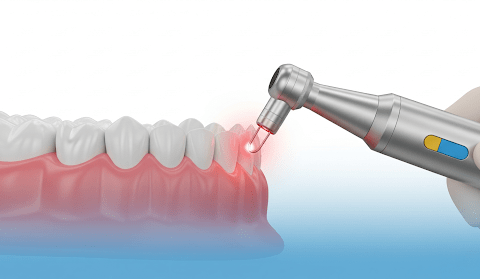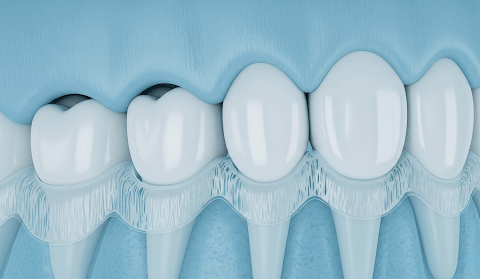How Dental Bridges Support Jaw Health and Prevent Facial Sagging
The consequences of losing a tooth extend beyond mere aesthetics. This experience can disrupt oral hygiene practices, impact one’s jawbone, and even reshape one’s face. People often only see the loss of a tooth, but there is a lot of damage going onto the upper and lower jaws which is relatively unnoticed. With modern dentistry, unrestricted dental bridges are not just for cosmetics, these false teeth play an important part in maintaining the structure of the jaw and preventing sagginess of the face.
This blog explains how bridges are made, how they sustain the integrity of the bones, and how they prevent aging from tooth loss.
Understanding the Impact of Tooth Loss
Appreciating the impacts of dental bridges on jaw bones require the understanding of how the process of losing a tooth unfolds.
Every tooth serves a functional and structural function. The mouth can chew and speak, and all teeth aid in proper alignment and spacing within the mouth. In addition, the roots of each tooth provide some form of stimulation to the jaw bone which helps maintain good density and health.
When one of the teeth is not counterbalanced with another:
- The bone below begins to undergo resorption and weaken as a result of insufficient stimulation.
- Your productivity levels begin to decline as your neighboring teeth are affected by bite misalignment.
- The loss of space can lead to aesthetic concerns, and eventually cause facial collapse over time.
What Is a Dental Bridge?
A dental bridge is a dental prosthesis designed to replace one or more teeth by “bridging” a gap with an artificial tooth that is fixed between two crowns attached to adjacent natural teeth or implants.
There are several types of dental bridges:
- Traditional bridges (most common): Supported by crowns on both sides.
- Cantilever bridges: Used when there’s only one adjacent tooth for support.
- Maryland bridges: Bonded to the backs of adjacent teeth using metal or porcelain.
- Implant-supported bridges: Anchored using dental implants instead of natural teeth.
Savvy patients using dental bridges should benefit from restored aesthetics along with jaw and facial support.
How Dental Bridges Support Jaw Health
1. Preventing Jawbone Deterioration (Indirectly)
Although dental bridges do not have roots fused to the jawbone like implants, they still help prevent some bone loss.
Here’s how:
- A bridge maintains proper alignment of the overlying teeth, preventing them from shifting into more unsightly positions that could create bite imbalances.
- The bridge helps maintain functional biting pressure on the supporting teeth and jaw areas, which helps slow down bone loss in those areas, even though the chewing function is not optimal.
While implants are much more effective at direct bone stimulation, bridges do at least help delay functional bone deterioration by preserving as much oral function as possible.
2. Balanced Distribution of Chewing Forces
The loss of a tooth affects the teeth adjacent to the gap and puts additional strain on them during chewing. This increased pressure can weaken the teeth, alter chewing patterns, and affect the jaw joint (TMJ) as well as the associated muscles.
A well-fitted bridge restores balanced force distribution and:
- Alleviates stress on your jawbone and temporomandibular joint.
- Preserves the tone and function of the muscles in the cheeks and jaw.
- Enables normal movement of the jaw, which safeguards its long-term health.
How Dental Bridges Prevent Facial Sagging
Lesser-known consequences of tooth loss include sagging of the face. This sagging is an indicator of the oral structure loss that has occurred, and can affect one’s appearance by making someone look older than their actual age.
1. Preservation of Facial Height and Volume
The teeth and jawbone work in conjunction to provide support for the lower third of the face. With the absence of teeth, the jawbone begins to atrophy, which often leads to a collapse of the face structure. This is most prominent in the cheeks as well as the mouth.
The advantages of a dental bridge include:
- Replacement of the missing tooth structure
- Prevention of further collapse of surrounding teeth
- Maintenance of the natural vertical facial dimension
The above support will provide improves the appearance of looking aged or “drawn-in” due to bone loss, making the individual look younger and healthier.
2. Maintenance of Lip and Cheek Structure
With the loss of teeth, the skin surrounding the mouth can start to cave in due to a void of support. This can lead to sagging and deep lines and wrinkles, especially associated with mid-facial aging.
A bridge helps keep:
- Maintenance of proper positioning for fuller lips
- Support of the cheeks from internal structures
Patients often report enhancement in facial aesthetics and symmetry after restoration using dental bridges.
Additional Benefits of Dental Bridges
In addition to maintaining jaw health and staving off drooping, dental bridges provide other long-term advantages:
1. Enhanced Speech
Bridges help regain some of the teeth lost which makes talking much simpler than it used to be. It improves airflow and movement making pronunciation clearer.
2. Restored Chewing Function
With the use of bridges, eating becomes much easier which encourages enhanced nutrition and digestion.
3. Prevention of Further Tooth Loss
Bridges provide support to the bite which prevents surrounding teeth from shifting or moving, therefore reducing the risk of damage.
Bridge vs. Implant: Which Offers Better Jawbone Protection?
While dental bridges serve the purpose of restoring form and function with excellence, dental implants stand unrivalled in their ability to stave off jawbone deterioration. The reason for this is that implants are placed directly into the jawbone where they fuse and carry out the functions of a natural tooth root, stimulating the bone.
Though dental bridges:
- Are less invasive
- Need no surgical procedures
- Are suitable for patients with medical issues or lack of bone for implants
- Deliver results faster and have a lower initial cost.
Tip: For the best of both worlds, some patients opt for implant-supported bridges, which combine multiple implants and a bridge unit for optimal support and bone stimulation.
Who Is a Good Candidate for a Dental Bridge?
You may be a good candidate for a dental bridge if:
- You are missing one or more teeth in a row
- Your remaining teeth are strong enough to support crowns
- You’re not a candidate for implants due to health, cost, or bone limitations
- You want a quicker, non-surgical solution to restore your smile
A dentist will evaluate your oral health and help determine the best type of bridge for your unique needs.
Dental Bridges Are More Than Cosmetic
Dental bridges are often chosen for their cosmetic value—but their impact goes far beyond looks. By replacing missing teeth, bridges help preserve jaw alignment, distribute bite forces evenly, and prevent visible facial aging caused by bone loss.
In short, they offer:
- Protection for your jaw health
- Prevention of premature facial sagging
- A boost in both function and confidence
If you’ve experienced tooth loss and are unsure of your next step, speak to your dentist about whether a dental bridge is right for you. Your smile—and your jaw—will thank you.



